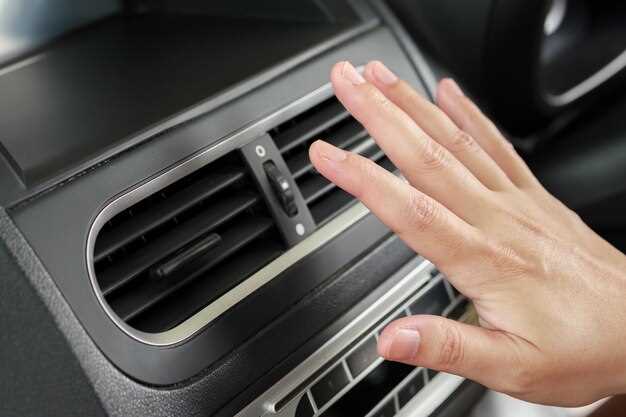

Maintaining a comfortable temperature in your car during the hot months is essential, and a well-functioning air conditioning system plays a crucial role in this. One of the key components of your car’s A/C system is the refrigerant, a substance that circulates through the system to absorb and expel heat. Over time, the refrigerant can leak or become exhausted, leading to decreased efficiency and a less effective cooling performance. If you’ve noticed that your air conditioning isn’t providing sufficient cooling, it may be time to recharge your system.
Recharging your car’s air conditioning system involves adding more refrigerant to restore the system’s optimal performance. This process can seem daunting, but with the right tools and knowledge, it can be a straightforward task. Understanding the signs that indicate low refrigerant levels, such as weak airflow or warm air blowing from the vents, is the first step in diagnosing the issue.
In this article, we will detail the necessary steps to successfully recharge your car’s air conditioning system, including the tools you’ll need, safety precautions, and tips to ensure your A/C functions efficiently. By following these guidelines, you can maintain a comfortable driving environment and extend the lifespan of your vehicle’s air conditioning system.
Identifying Symptoms of Low Refrigerant Levels

Low refrigerant levels in your car’s air conditioning (AC) system can drastically reduce its efficiency and performance. Recognizing the symptoms early can help you address the issue before it leads to more significant problems. Here are key signs to look for:
One of the most common symptoms is a noticeable decrease in cooling performance. If your AC is blowing warm air instead of cold, it may indicate that the refrigerant level is insufficient to effectively cool the air entering the cabin. Additionally, you may hear unusual noises, such as hissing or bubbling sounds, emanating from the AC system. These sounds suggest that there may be a refrigerant leak, which is a critical issue that needs immediate attention.
Another indicator of low refrigerant levels is moisture or frost forming around the AC components. If you notice ice accumulation on the evaporator coil or any connections, it may signal that the refrigerant is not circulating properly. Lastly, frequent cycling of the AC compressor can also suggest low refrigerant levels–if you observe that your compressor is turning on and off more frequently than usual, it could be trying to compensate for inadequate refrigerant.
Pay attention to these symptoms to determine if it’s time to recharge your AC system. Promptly addressing low refrigerant issues will help maintain a comfortable driving experience and prevent extensive repairs in the future.
Step-by-Step Guide to Properly Recharge Your AC System
Recharging your car’s air conditioning (AC) system is essential for maintaining its efficiency. Follow these steps to properly recharge your AC system with the appropriate refrigerant.
Step 1: Gather Necessary Tools
Before beginning, ensure you have the required tools: AC recharge kit, refrigerant, safety goggles, and gloves. This equipment will help make the process safe and efficient.
Step 2: Locate the Low-Pressure Service Port
Find the low-pressure service port on your AC system, typically located on the larger diameter aluminum line between the compressor and the evaporator. This port is where you will connect the refrigerant supply.
Step 3: Prepare the Recharge Kit
Attach the gauge and hose from your AC recharge kit to the low-pressure service port. Ensure the connection is secure, but do not overtighten it to avoid damage.
Step 4: Check the Current System Pressure
Read the gauge preset on the recharge kit. Check the pressure to determine if the refrigerant is indeed low. This will guide you on how much refrigerant you need to add.
Step 5: Add Refrigerant
Start the engine and set the AC to the maximum cooling setting. Shake the refrigerant canister, then open the valve slowly to allow refrigerant to flow into the system. Monitor the gauge to avoid overcharging, which can damage the AC system.
Step 6: Monitor the System
While adding the refrigerant, monitor the pressure gauge. Once it reaches the recommended level, close the valve on the refrigerant canister and disconnect the hose from the service port.
Step 7: Test the AC
Turn off the engine and start the vehicle again after a few minutes. Check the AC performance by feeling the air from the vents. It should be cooler than before. If not, you may need to repeat the process or check for leaks.
Step 8: Clean Up
Properly dispose of any refrigerant canisters according to local regulations. Ensure that all tools are stored safely, and check your AC system regularly to maintain optimal performance.
By following these detailed steps, you can successfully recharge your car’s AC system and enjoy a comfortable ride even on the hottest days.
Choosing the Right Refrigerant for Your Vehicle

Selecting the correct refrigerant for your vehicle’s air conditioning (AC) system is crucial to ensure optimal performance and efficiency. The type of refrigerant used can significantly affect cooling capacity, system pressure, and environmental impact.
Most vehicles manufactured before 1994 commonly use R-12 (dichlorodifluoromethane). However, due to environmental regulations, R-12 has been phased out, and its use is now illegal in many countries. Most modern vehicles utilize R-134a, a more environmentally friendly option that still provides excellent cooling performance.
As of 2020, many automakers have transitioned to R-1234yf, a newer refrigerant that offers a lower global warming potential compared to R-134a. If you are considering recharging your vehicle’s AC system, it’s essential to consult your owner’s manual or a professional to determine the correct type of refrigerant compatible with your specific model.
Using the wrong refrigerant can lead to inadequate cooling, system damage, and potential safety issues. Additionally, mixing different types of refrigerants is highly discouraged as it can create harmful reactions and impair system efficiency. Therefore, always ensure to use the recommended refrigerant type for your vehicle to maintain performance and prolong the lifespan of your AC system.






